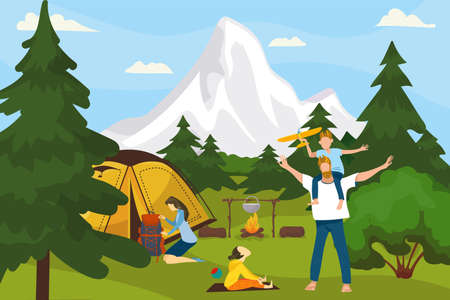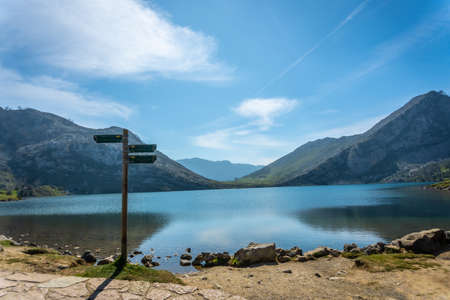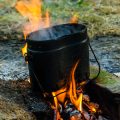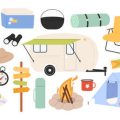Top Lakeside Campgrounds for Fishing Enthusiasts
If youre looking for the ultimate fishing getaway, theres nothing better than pitching a tent or parking your RV beside a peaceful lake surrounded by lush forests. Across the United States, from the misty shores of the Pacific Northwest to the rolling hills of the Appalachian Mountains, youll find beautiful lakeside campgrounds that are perfect for casting a line and relaxing in nature. Whether youre after trout, bass, or catfish, these spots combine great fishing with stunning scenery.
1. Lake Wenatchee State Park – Washington
Nestled in the Cascade Mountains, Lake Wenatchee offers crystal-clear waters fed by glacial runoff. Anglers can expect to catch rainbow trout and kokanee salmon while enjoying panoramic mountain views.
Highlights:
- Abundant trout fishing
- Family-friendly campground with hiking and swimming
- Forested surroundings for a true wilderness feel
2. Big Bear Lake – California
Located in Southern California’s San Bernardino National Forest, Big Bear Lake is a year-round favorite for anglers. The lake is stocked regularly with trout and has natural populations of bass and catfish.
Highlights:
- Multiple lakeside campgrounds with full amenities
- Boat rentals and fishing docks available
- Great spot for both beginners and experienced anglers
3. Lake Ouachita – Arkansas
This massive reservoir is one of the cleanest lakes in the U.S., ideal for catching striped bass and crappie. Surrounded by the Ouachita National Forest, it’s a peaceful escape with plenty of space to explore.
Highlights:
- Over 200 islands to boat or kayak around
- Well-maintained forested campgrounds along the shoreline
- Diverse fish species including largemouth bass and bream
4. Lake Guntersville State Park – Alabama
A must-visit for bass fishing lovers, this lake is famous nationwide for its largemouth bass tournaments. The surrounding Appalachian foothills provide a scenic backdrop.
Highlights:
- Lakeside campsites with electric hookups and restrooms
- Fishing piers and boat launches available on-site
- Excellent bird watching and hiking trails nearby
5. Deep Creek Lake – Maryland
This man-made lake in western Maryland is a top spot in the Appalachians for walleye, smallmouth bass, and northern pike. The area offers a mix of modern comforts and natural beauty.
| Feature | Description |
|---|---|
| Main Fish Species | Walleye, smallmouth bass, northern pike |
| Campsite Type | Tent sites, cabins, RV-friendly spots with hookups |
| Nearby Activities | Paddleboarding, hiking, ziplining, local dining options |
Plan Your Trip Wisely
Before heading out, check local regulations for fishing licenses and seasonal restrictions. Many of these locations also offer equipment rentals and guided fishing tours if youre new to the area.
Lakeside camping combined with great fishing makes for an unforgettable outdoor adventure. Whether you’re chasing trophy-sized bass or just want to enjoy quiet mornings by the water, these campgrounds offer something special for every angler.
2. Best Times of Year for Forest and Lake Camping
Timing your camping trip just right can make a big difference in your overall experience, especially when youre heading to one of Americas top lakeside campgrounds surrounded by forests. From the best fishing conditions to fewer crowds and active wildlife, heres what you need to know about the ideal seasons for your next outdoor adventure.
Spring (March – May)
Spring is a refreshing time to camp by the lake as nature comes alive. Trees are budding, animals are active, and fish like bass and trout start moving into shallower waters, making them easier to catch. However, weather can be unpredictable with occasional rain showers and chilly nights, so pack accordingly.
Pros:
- Great fishing for trout and bass
- Fewer crowds compared to summer
- Wildflowers and active wildlife
Cons:
- Cooler temperatures, especially at night
- Mud and wet trails from spring rain
Summer (June – August)
Summer is peak camping season across the U.S., especially near lakes surrounded by lush forests. The warm weather makes it ideal for swimming, kayaking, and all-day fishing. However, this is also when campgrounds get crowded, so reservations are a must.
Pros:
- Warmest weather for water activities
- Long daylight hours for extended fishing
- Most campground amenities fully operational
Cons:
- Larger crowds and limited campsite availability
- Increased bug activity (bring repellent!)
Fall (September – November)
If youre looking for peace and stunning scenery, fall is hard to beat. The cooler temps bring out vibrant foliage around forested lakes, and fish are actively feeding before winter sets in. It’s also a quieter time with fewer campers around.
Pros:
- Spectacular fall colors
- Excellent fishing conditions in early fall
- Less crowded campgrounds
Cons:
- Cooler temperatures, especially late fall
- Some park facilities may close after Labor Day
Winter (December – February)
Winter camping isn’t for everyone, but if youre an experienced camper who enjoys ice fishing or snow-covered forest views, it can be rewarding. Just be sure you’re well-prepared for cold conditions and check if your chosen campground stays open year-round.
Pros:
- No crowds—total solitude!
- Unique winter landscapes and wildlife spotting opportunities
- Ice fishing available in some regions
Cons:
- Bitter cold; proper gear required
- Limited access to amenities or closed campgrounds
Seasonal Comparison Table
| Season | Fishing Quality | Crowd Size | Weather Conditions | Best For |
|---|---|---|---|---|
| Spring | Good (especially trout & bass) | Low to Medium | Mild with occasional rain | Nature lovers & early anglers |
| Summer | Great (bass, panfish) | High | Warm & sunny | Families & water activity fans |
| Fall | Excellent (pre-winter feeding) | Low to Medium | Crisp & cool with colorful foliage | Avid anglers & photographers |
| Winter | Poor to Moderate (ice fishing only) | Very Low | Cold & snowy in many areas | Icy adventure seekers & solitude lovers |
No matter which season you choose for your lakeside camping trip, planning ahead based on your preferences—whether its great fishing, fewer people, or beautiful scenery—will help you make the most of your outdoor getaway.

3. Family-Friendly Campsites with Fishing Access
Planning a camping trip with the whole family? There are plenty of lakeside campgrounds across the U.S. that combine peaceful forest surroundings with easy access to fishing spots perfect for kids and beginners. These campgrounds often come with family-focused amenities, ranger-led programs, and safe environments that make it easier than ever to introduce your children to the joys of outdoor life and fishing.
What Makes a Campsite Family-Friendly?
When looking for a campground that works well for families, here are some key features to keep in mind:
- Easy Water Access: Short walking distance from campsites to the lake or river.
- Clean Restrooms & Showers: Well-maintained facilities make camping more comfortable for parents and kids alike.
- On-Site Amenities: Picnic areas, playgrounds, fire pits, and general stores can make your stay more convenient.
- Educational Programs: Ranger-led activities like junior ranger programs or guided nature walks help entertain and educate children.
- Safety: Clearly marked trails, designated swimming or fishing zones, and friendly staff on-site.
Top Family-Friendly Campgrounds with Fishing Access
| Campground Name | Location | Main Features |
|---|---|---|
| Bass Lake Recreation Area | Sierra National Forest, California | Lakeside sites, boat rentals, kid-friendly swimming area |
| Cherokee Lake Campground | Tennessee | Pier fishing, playgrounds, group activities led by rangers |
| Kettle Moraine State Forest – Mauthe Lake | Wisconsin | Sandy beach, stocked lake, beginner fishing clinics |
| Swan Lake Campground | Minnesota | Canoe rentals, wildlife viewing, clean facilities |
Bass Lake Recreation Area – California
Nestled in the Sierra National Forest near Yosemite, Bass Lake is a family favorite. With shallow entry points perfect for young anglers and kayak rentals on-site, it’s easy to spend full days out on the water. The campground also offers evening ranger talks under the stars.
Cherokee Lake Campground – Tennessee
This lakeside gem provides a quiet retreat with gentle waters ideal for children learning how to fish. Families can enjoy nature trails nearby or sign up for weekend ranger programs focused on local wildlife and fishing safety tips.
Kettle Moraine State Forest – Mauthe Lake Campground – Wisconsin
This location is great for first-time campers. Mauthe Lake is stocked with panfish and bass—great for teaching kids how to cast. The campground offers educational activities and has lifeguards on duty during peak season at the swimming area.
Swan Lake Campground – Minnesota
A peaceful spot surrounded by dense forest, Swan Lake offers easy access to calm waters where families can fish from shore or canoe. The area is known for its abundance of perch and bluegill—ideal catches for young anglers.
Your Next Family Fishing Adventure Awaits!
No matter which region you’re exploring, these family-oriented campgrounds provide a safe and fun environment to introduce kids to fishing while enjoying the beauty of America’s forests and lakes. From beginner-friendly banks to ranger-led learning sessions, there’s something here for every age group to enjoy.
4. Gear and Prep Guide for Lakeside Fishing Trips
Heading out to a lakeside campground surrounded by forest is an adventure in itself—but having the right gear can make all the difference between a relaxing retreat and a stressful scramble. Whether youre casting your line at dawn or cooking up your catch under the stars, heres what you need to pack for the perfect fishing and camping experience.
Fishing Essentials
Let’s start with the basics. Whether youre an experienced angler or just trying your luck, having the right equipment is key. Here are some must-haves:
| Item | Purpose |
|---|---|
| Fishing Rod & Reel | Your main tool for catching fish—choose based on the type of fish common in the lake. |
| Tackle Box | Organizes hooks, sinkers, lures, bobbers, and extra line. |
| Bait (Live or Artificial) | Essential for attracting fish—check local preferences and regulations. |
| Fishing License/Permit | Required in most U.S. states; check with local wildlife authorities before your trip. |
| Stringer or Cooler | Keeps your catch fresh until you’re ready to cook it. |
Camping Gear for Forested Lakeside Sites
Lakeside campgrounds in forested areas often mean uneven terrain, moisture, and variable temperatures. Here’s what you’ll need to stay comfortable and prepared:
Shelter & Sleeping
- Tent with Rainfly: Choose one that’s waterproof and well-ventilated for damp environments.
- Sleeping Bag: Rated for cool nights—forest lakes can get chilly even in summer.
- Sleeping Pad or Air Mattress: Adds comfort and insulation from the ground.
Cooking & Food Storage
- Portable Stove or Grill: Ideal if open fires arent allowed or its too wet for firewood.
- Cookware Set: Lightweight pots, pans, utensils, and a cutting board go a long way.
- Cooler with Ice Packs: Keeps perishables safe—especially important if you plan to cook your catch.
- Bear-Proof Food Container: In forested areas, wildlife-proof storage is essential.
Clothing & Safety Gear
- Waterproof Boots: Great for muddy trails and slippery lake edges.
- Layered Clothing: Base layers for moisture-wicking, mid-layers for warmth, outer layers for wind/rain protection.
- Sunscreen & Bug Spray: Lakes attract both sun glare and mosquitoes!
- First Aid Kit: Always be prepared for minor injuries or bites.
Packing Tips for Lakeside Adventures
A few quick tips to help you pack smart and travel light:
- Create a checklist: Avoid last-minute forgetfulness by planning ahead.
- Use dry bags or waterproof containers: Protect electronics, clothes, and food from unexpected rain or splashes.
- Pack in layers: Weather can shift quickly near water and in forests—be ready to adapt.
Lakeside Pro Tip:
If you’re new to fishing in a specific state, check the local Department of Natural Resources (DNR) website. They often list seasonal fish species, permit requirements, and even stock reports so you know what’s biting—and where!
The right gear makes all the difference when exploring America’s best forest-surrounded lakeside campgrounds. With this guide in hand, you’ll be set to reel in great memories while staying safe and comfortable outdoors.
5. Local Tips and Regulations to Know Before You Go
Before packing your gear and heading to a beautiful lakeside campground surrounded by forest, its important to know the local rules that help protect both nature and your experience. Each state and even individual parks have their own regulations when it comes to fishing and camping. Heres what you need to keep in mind for a smooth and respectful outdoor adventure.
Fishing Licenses
In the U.S., fishing without a proper license can lead to fines—even if youre just casting for fun. Most states require anyone over a certain age (usually 16) to have a fishing license. Some areas also offer short-term or day passes for visitors.
| State | License Required? | Where to Get It |
|---|---|---|
| California | Yes (Age 16+) | California Department of Fish and Wildlife |
| Texas | Yes (Age 17+) | Texas Parks & Wildlife Department |
| Michigan | Yes (Age 17+) | Michigan DNR Website |
Catch Limits and Species Rules
To protect fish populations, many lakes have specific rules about how many fish you can keep per day and what species are legal to catch. These limits vary widely depending on the lake, season, and fish type.
Example Catch Limits:
- Bass: Limit of 5 per day in many states; must be at least 12 inches long.
- Trout: Often limited to 3–6 per day depending on region.
- Panfish (e.g., Bluegill): Up to 25 per day in some locations.
Camping Rules You Should Know
Campsites near lakes often have special guidelines designed to preserve the environment and ensure everyone has a great time. Here are some common rules:
- Fire Safety: Check for fire bans during dry seasons; always use designated fire rings.
- No Trash Left Behind: Pack out all garbage, including fishing line and bait containers.
- Quiet Hours: Many campgrounds enforce quiet hours from 10 PM to 6 AM.
- Pets: Allowed in most areas but must be kept on a leash.
Check Before You Go
Laws and conditions change with the seasons, especially when it comes to fire danger or protected wildlife zones. Always check the official website of the state park or national forest youre visiting before your trip. A quick look can save you from unexpected surprises—and help you enjoy your fishing paradise responsibly.


